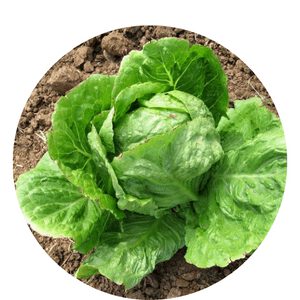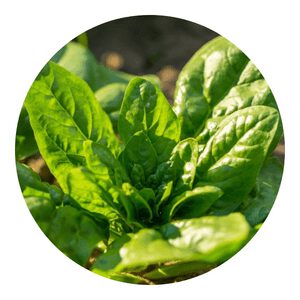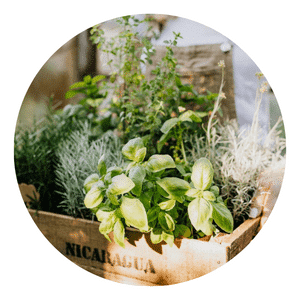What Vegetables to Plant in Spring in New York
Spring is the perfect time of year to start planting vegetables in New York. With the warm weather and plenty of sunshine, it’s the ideal environment for growing fresh produce.
To ensure a successful harvest, it’s important to choose vegetables that will thrive in New York’s climate and soil.
There are a variety of vegetables that can be grown during the spring season, so deciding which ones to plant can be overwhelming.

New York Spring Menu
New York Spring Planting
When the weather in New York starts to warm up and the days get longer, it’s time for gardeners across the state to start planning what vegetables they will be planting this spring.
With a variety of climates in different areas of New York, it is important for gardeners to take into account what types of vegetables will thrive in their specific region.
Whether you’re an experienced gardener or just starting out, there are plenty of vegetable options that are great for spring planting in New York.
This article will discuss some of the top vegetables that can be planted during the spring months in New York.
Location & Climate: Ideal Conditions
Location and climate are two of the most important factors when deciding what vegetables to plant in New York during the spring season.
The ideal conditions for planting vegetables in this region are a combination of direct sunshine, well-drained soil, and plenty of moisture.
New York’s temperate climate and diverse geography make it an excellent spot for growing vegetables.
In the warmer regions near the coast, temperatures are milder throughout the year, while further inland regions have colder winters with heavy snowfall.
Spring is usually quite warm and sunny in most parts of New York, although some areas may still experience occasional frost or rain.
The key to successful vegetable gardening in New York is to take advantage of the unique characteristics each area offers.
Gardeners should select varieties that best suit their particular microclimate by researching local weather patterns and soil types beforehand.
Scheduling: When to Plant
Scheduling when to plant vegetables can be a tricky endeavor for gardeners living in New York.
Winter in this region of the country can be unpredictable, and temperatures may fluctuate significantly from season to season.
To ensure success, those who plan to garden should take into account both the average temperature in their area as well as the amount of sunlight each day when scheduling their planting activities.
The best time for many vegetable gardens in New York is early spring.
Most vegetables thrive with cooler temperatures and plenty of sunshine, so look for a stretch of days that have highs in the mid-60s and lows around 40 degrees Fahrenheit or below.
Of course, it’s important to note that spring weather can change quickly, so be sure to check your local forecast often to adjust your schedule accordingly and make sure you’re getting the most out of your growing season.
Soil Preparation: Ready the Earth
Soil preparation is an essential step in gardening, and nowhere is it more important than for those wishing to plant vegetables in the springtime in New York.
Before getting started with planting, gardeners must make sure the soil is ready to receive their crops.
From adding organic matter to testing pH levels and removing weeds, there are a few steps that should be taken prior to planting any vegetables.
Organic matter like compost and manure can help improve the structure of soil, making it looser, lighter, and better able to hold moisture while improving drainage.
The pH levels should also be tested as different vegetables have different preferences.
Generally speaking most vegetables prefer a slightly acidic soil between 6 and 7 on the pH scale.
Alternately mulching around plants can keep weeds at bay by blocking sunlight from reaching them which will reduce competition for resources between plants and weeds alike.
As the flowers awaken, it's time to start planning, what vegetables to sow in New York spring. Carrots and asparagus will bring, soil they love and plenty of light they cling. Onions and peppers won't mind if it rains, broccoli and Brussels sprouts like days that remain cool with shade from tall trees' veil. Spinach will fill your plate with its hearty leafy greens, a bounty for any new yorker's feast!
Chappy The Gardener
Radishes
Radishes are an ideal vegetable to plant in the spring months for gardeners in New York.
These delicious vegetables grow quickly and can be harvested within a few weeks of planting.
Radishes are low in calories, high in fiber, and provide plenty of potassium, phosphorus, magnesium, calcium, and other minerals.
They are also a great source of vitamin C and antioxidants that help protect one’s body from disease.
Radishes come in various shapes, sizes and colors depending on the variety planted; they can be round or long-shaped with white, red or purple skins.
When planting radishes it is important to choose a site with well-drained soil that receives direct sunlight for at least six hours each day.
The seeds should be sown directly into the ground (rather than starting indoors) when temperatures reach about 50 degrees Fahrenheit.
Tips for planting and caring for radishes in New York's spring climate
Gardening in New York during the springtime can be a rewarding experience, especially if you’re looking to plant vegetables that are suited for the season.
Radishes are one of these vegetables; they’re easy to grow and require minimal maintenance.
If you’re considering adding radishes to your garden this spring, here are some tips for planting and caring for them.
To begin, select an open area in your garden with full sun exposure and well-draining soil that is high in organic matter.
If needed, supplement your existing soil with compost or aged manure before planting the seeds. Plant the seeds 1/2 inch deep into rows that are spaced 3 inches apart from each other and water regularly until germination takes place.
Weed out any potential competition for nutrients so that the radish plants have enough space to grow properly.
Lettuce
Lettuce is an excellent vegetable to plant in the springtime in New York.
This cool season vegetable thrives in the cooler temperatures of early spring and can be harvested throughout the summer months.
For those looking for a great salad green, lettuce provides a variety of tastes and textures that will enliven any meal.
There are several types of lettuce to choose from, including looseleaf lettuces such as red sails, butterhead lettuces like bibb or Boston, romaine varieties like cos or parris island, and crisphead varieties like iceberg and lola rosa.
Each type has its own unique flavor profile so you can experiment with different flavors until you find your favorite.
Planting lettuce is relatively easy; it requires well-drained soil rich in organic matter and should be planted ½ inch deep when soil temperature is at least 40 degrees Fahrenheit.
Tips for planting and caring for lettuce in New York's spring climate
As New York’s spring season approaches, gardeners everywhere are eagerly preparing for the warmer days to come.
Lettuce is one of the most popular vegetables for gardeners in New York, as it thrives in cooler temperatures and can often be harvested several times throughout the year.
To ensure success when planting lettuce this spring, here are some tips on how to get started and care for your plants.
When selecting lettuce varieties, it is important to pay attention to the seed packet instructions since different types of lettuce prefer different conditions and maturity times.
Most lettuces thrive in cool weather so they should be planted early in the spring season when soil temps reach above 40 degrees Fahrenheit.
In addition, make sure to plant them in a spot that receives at least six hours of sun throughout the day.
Spinach
The sixth vegetable to consider planting in the spring in New York is spinach.
Spinach is an easy-to-grow vegetable that can be planted as early as late April, and can be harvested until October.
It prefers cooler temperatures, making it a perfect choice for growing in spring and fall. It requires full sun, but also tolerates partial shade throughout the day.
The soil should have plenty of organic matter, such as compost or manure, to retain moisture and provide nutrition for the plants.
Planting should be done on a cloudy day or late afternoon to prevent damage from direct sunlight or heat stress.
Once established in the garden, spinach needs regular watering during dry periods and thinning out of overcrowded seedlings for optimal growth.
With proper care and maintenance, this versatile vegetable can provide fresh harvest all season long!
Tips for planting and caring for spinach in New York's spring climate
Springtime in New York is the perfect time to get your garden growing.
Whether you’re a beginner or an experienced gardener, there are several vegetables you can plant in the spring that will thrive in the New York climate.
One vegetable that should definitely be included on your list is spinach.
This leafy green is a powerhouse of nutrition and when planted and cared for properly, it can produce a plentiful harvest come summertime. Here are some tips for planting and caring for spinach in New York’s spring climate:
When choosing the right variety of spinach to grow in this climate, look for those varieties labeled “long standing” or “bolt-resistant” as these have been bred to survive longer during warm weather.
Strawberries
Strawberries are a delicious and easy to grow vegetable that can be planted in the springtime in New York.
Not only do they add color, texture, and sweetness to dishes – they’re also extremely healthy!
With their high levels of vitamins C and K, as well as antioxidants, eating strawberries has been linked to improved heart health, brain function, and more.
Planting strawberries is relatively straightforward; all you need is a sunny spot with some good soil.
When planting strawberry plants, it’s important to remember to space them out and keep them well-watered for optimal growth.
Spring is an ideal time for planting strawberries in New York since it’s when the temperature starts warming up enough for the berries to get off to a great start.
Tips for planting and caring for strawberries in New York's spring climate
For those eager to start cultivating a garden in the springtime, New York offers an ideal temperate climate for growing strawberries.
With just a few tips and tricks, it’s easy to successfully plant and nurture these juicy fruits in your backyard or even on a balcony.
Here are some guidelines to consider when planting and caring for strawberries during New York’s springtime climate.
To get the most out of your strawberry patch, choose plants that are locally sourced as they have already adapted to the local soil conditions.
Find shade-tolerant varieties so that you can keep them safe from direct sunlight.
For optimal growth, ensure that you prepare the soil with plenty of compost before planting your strawberries in early April or May when temperatures reach between 50°F and 70°F (10°C-21°C).
Raspberries
Raspberries are a popular fruit choice for spring planting in New York.
They grow best in slightly acidic soil and require adequate sunlight, making them an ideal option for bright, sunny areas of the garden.
Raspberries can be grown from either seeds or transplants and should be planted in early spring when the ground is still slightly cool.
Once established, they need regular watering to ensure their roots don’t dry out and will thrive with a few inches of organic mulch spread around their base.
While patience is key as it can take up to two years before raspberries start producing fruits, many find that the rewards are worth the wait!
By mid-summer raspberries will produce sweet and juicy treats for you to enjoy in pies or tarts or simply eaten fresh off the bush.
Tips for planting and caring for raspberries in New York's spring climate
Raspberries are a delicious and nutritious addition to any garden.
They are easy to grow and thrive in New York’s spring climate.
However, it takes more than just planting them in order to ensure a successful raspberry crop.
Here are some essential tips for planting and caring for raspberries in New York’s spring climate.
When selecting the location for your raspberry patch, try to pick an area with full sun exposure that is also sheltered from strong winds.
Raspberries need good drainage, so make sure the soil is well-draining and not too wet or damp.
When planting your raspberries, space each row at least three feet apart and keep each plant at least one foot away from its neighbors.
Water your plants occasionally during dry spells or when the top three inches of soil become dry.
Asparagus
Asparagus is one of the best vegetables to plant in spring in New York. This perennial vegetable can be planted once and will return yearly.
Not only is it a great addition to any vegetable garden, but asparagus provides nutrition benefits for the whole family.
When planting asparagus, choose an area with well-drained soil that gets plenty of sunlight.
Asparagus requires a slightly acidic soil so amend it with compost before planting.
Once established, asparagus needs minimal maintenance other than watering and weeding regularly.
They are ready to harvest when they are 6-8 inches tall, usually in late spring or early summer depending on where you live in New York.
It’s important not to pick all of the spears during the first year, instead allowing some spears to turn into ferns which will provide nutrients for next season’s crop.
Tips for planting and caring for asparagus in New York's spring climate
As New Yorkers start to plan their vegetable gardens for spring, many are looking to plant asparagus in their garden.
Asparagus is a delicious addition to any meal and can be harvested up to three weeks before other vegetables.
To ensure success when planting and caring for asparagus, here are some tips to keep in mind.
When selecting the area of the garden that will house your asparagus, it’s important to pick an area with well-draining soil and plenty of sunlight.
This will help ensure that your crop receives the nutrients it needs while avoiding standing water which can cause root rot.
Additionally, make sure the soil is kept loose by adding organic material such as compost or manure prior to planting.
Peas
Peas are a delicious and nutritious vegetable to plant in the springtime in New York.
Not only do they add flavor to any meal, but they are also easy to grow and require little maintenance during the growing season.
Peas have been around for centuries, with some evidence that they were eaten as early as 9750 BC!
There is a wide range of pea varieties you can choose from depending on your climate, soil type, and taste preference.
For those living in cooler climates such as New York, April is the best time to get started planting peas.
They generally take about 10-12 weeks before reaching maturity so it is important to plan ahead!
Peas need plenty of sunlight and fertile soil that drains well so be sure to prepare your garden accordingly before planting them.
With just a bit of effort you can enjoy homegrown peas this spring!
Tips for planting and caring for peas in New York's spring climate
Here are some valuable tips on how to successfully plant and care for peas during the spring season in New York.
First, pick a location that has plenty of sun exposure, as most varieties of peas need at least six hours of sunlight per day.
It’s also important to prepare the soil properly by tilling it well and adding some compost or manure to provide necessary nutrition for your plants.
If you have heavy soil, consider using raised beds for better drainage when planting your peas.
In conclusion, New York is an ideal place to plant vegetables in the spring.
There are a variety of vegetables that thrive in the cooler weather and shorter days, including lettuce, spinach, kale, carrots, radishes, turnips, beets, and peas.
The soil should be well drained and amended with compost or fertilizer prior to planting the seeds.
With proper care and regular maintenance throughout the season, gardeners can expect a bountiful harvest come summertime.
Click To Grow

Solar Light

Plant Pots

Bird House
Helps Us Grow – Share If You Like


















